There are innumerable celestial phenomena that dance in the vast cosmos, some of which we only understand at a surface level. One of these captivating marvels is the solar flare, a sudden flash of increased brightness on the sun, releasing an extraordinary amount of energy. But what if we told you a significant solar flare just occurred from a hidden sunspot? An event that, quite literally, left us in the dark.
The Unforeseen Eruption
A breathtaking spectacle unfolded on May 16, when an unexpected M9.6 class solar flare erupted from an unseen sunspot. The astronomical event precisely occurred at 12:43 p.m. EDT (1643 GMT), originating from a sunspot that, at the time, was not visible to us Earth-dwellers.
This invisible cradle of tremendous energy intrigued both scientists and skywatchers alike, adding a layer of mystique to our understanding of the sun and its enigmatic spots.
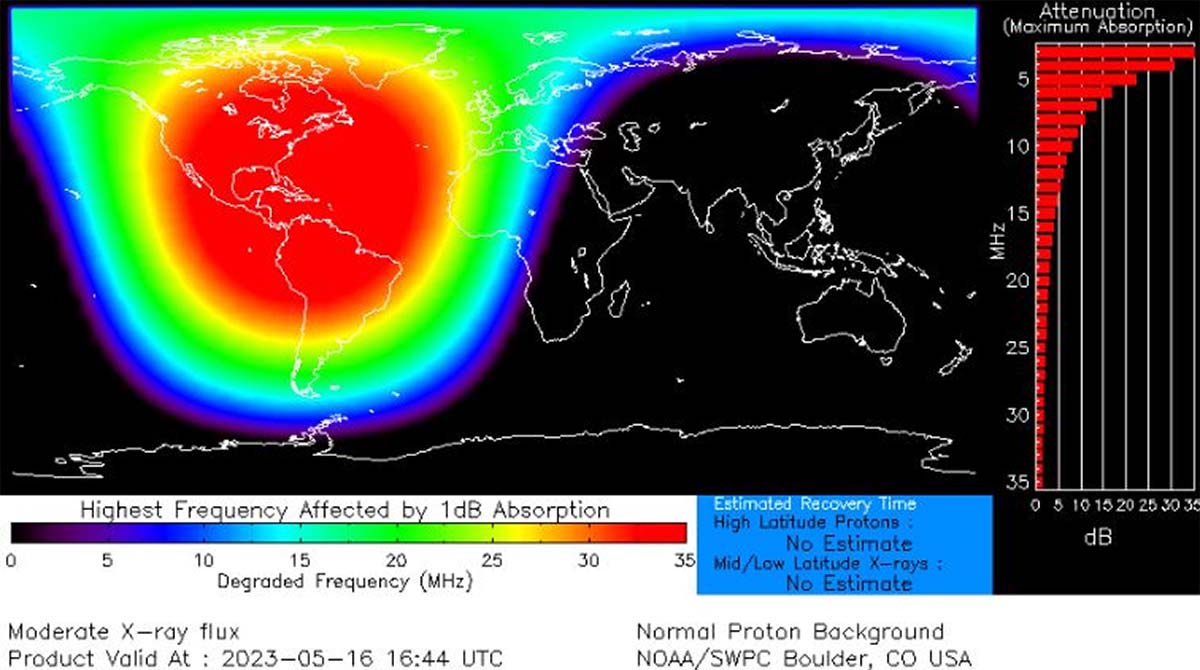
But what's more fascinating is that this off-stage spectacle didn't go unnoticed. Despite the sunspot facing away, the cosmic ballet didn't miss a beat. The solar flare, an awe-inspiring release of magnetic energy, sent a generous dose of radiation toward Earth.
This radiation triggered a radio blackout, a rather intriguing terrestrial side-effect of a solar eruption. Parts of North America, Central America, and South America were affected, painting a picture of the solar flare's invisible, yet noticeable footprint.
Revealing the Invisible: Tracking the Hidden Sunspot
Ever watched a spinning top? Just like that, the sun's rotation brought the mysterious, hidden sunspot into focus. It's a waiting game, an observation marathon for us to track these unseen spots.
By leveraging this rotation, astronomers predict that the sunspot will eventually move to be directly facing Earth by the weekend, a phenomenon that holds both scientific interest and potential implications for our planet.
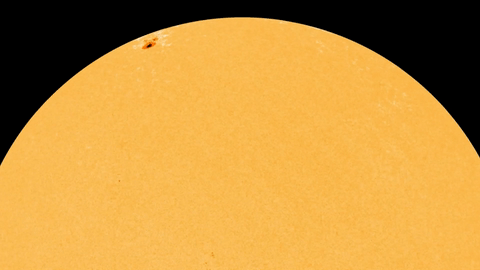
The Solar Dynamics Observatory, NASA's vigilant sentinel in space, has captured an image of this hidden sunspot. The image, which provides a unique glimpse into the sun's vibrant choreography, is more than just a picture. It serves as a crucial tool to unravel the complexities of sunspots and the powerful solar flares they spawn.
Decoding Solar Flares
Now, let's delve a little deeper into the enigmatic world of solar flares. They are not all alike, and their intensity varies. Therefore, scientists have classified them into distinct categories to understand their potential impact.
These classes, from the most powerful to the least, include X-class, M-class, C-class, B-class, and A-class flares. While X-class flares are the show-stoppers with a powerful presence, M-class flares, like the recent one, pack a punch too.
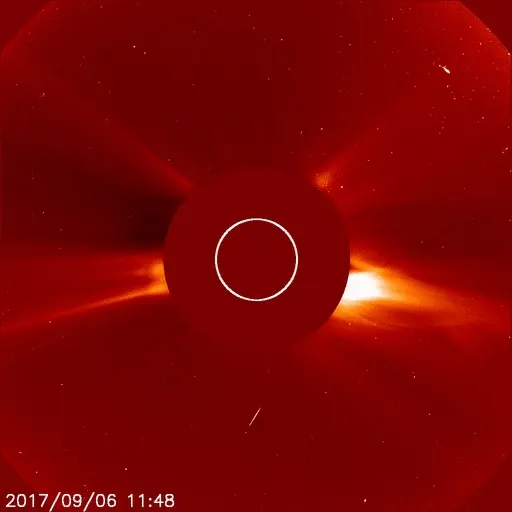
Within each class, a number from 1 to 10 further specifies the strength of the flare. The larger the number, the stronger the flare within its class. So an M9.6 flare, for example, is substantially more potent than an M2.3 flare.
Unraveling the nuances of the recent M9.6 flare reveals an intriguing subplot. While it falls just short of the X-class category, scientists speculate that it might have been an X-class flare in disguise!
How, you ask? It is believed that the full intensity of the flare might have been partially obscured by the edge of the sun, leading to its classification as an M-class flare. If true, it's a stellar reminder that there's always more than meets the eye when it comes to our dazzling star, the sun.
Understanding Solar Cycle 25
The sun, our celestial neighbor, follows a rhythm of its own. A rhythm characterized by cycles known as solar cycles, each lasting approximately 11 years. Currently, we're amid Solar Cycle 25, a pattern that began in December 2019.
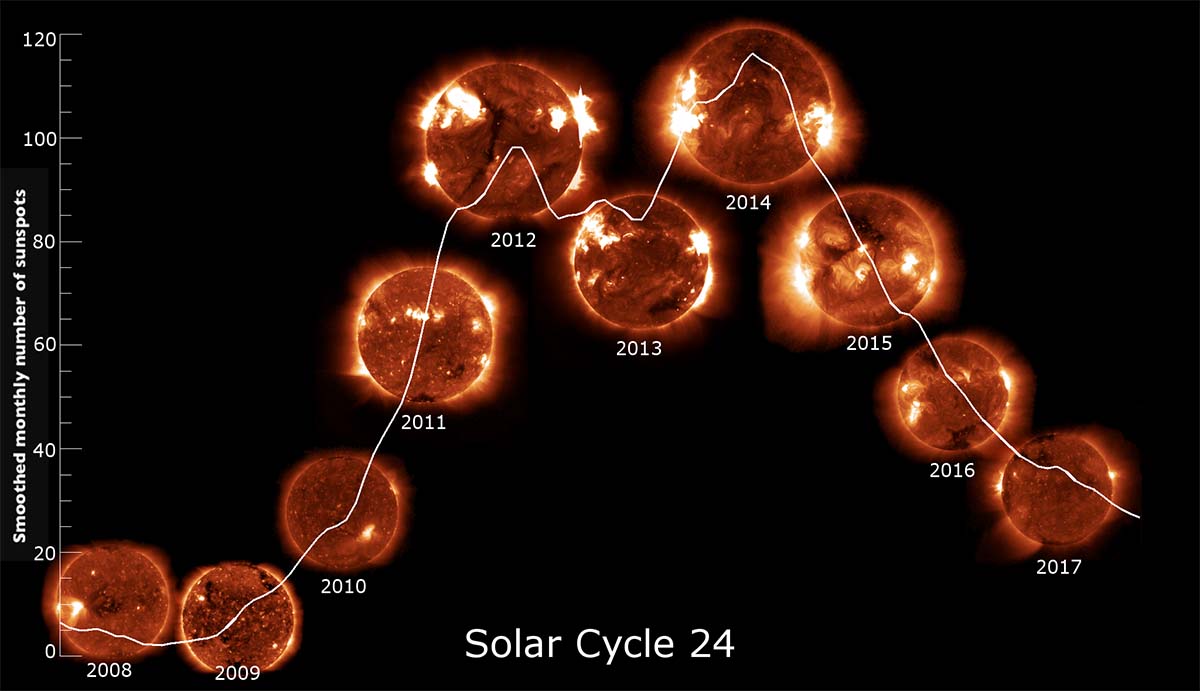
As we edge closer to its predicted peak in 2025, we see an upswing in solar activity. This recent surge is like an overture, hinting at the dramatic crescendo we can expect as we move toward the peak.
The current solar flares and sunspots are just the tip of the iceberg. They're the precursors of an anticipated surge in solar activities associated with Solar Cycle 25. The sun, in its fiery glory, is merely stretching and gearing up for a grand spectacle of cosmic proportions.
24 Hours of Continuous Solar Flares
Life on the sun is far from dull, and the past 24 hours have been an absolute roller coaster. A barrage of solar flares, a veritable cosmic fireworks display, has kept the sun ablaze. Not one, not two, but nine M-class flares have lit up the solar atmosphere, the orchestrator of this celestial extravaganza being the giant sunspot, AR3311.
Amid this flurry of solar activity, there's another player on the stage, the sunspot AR3310. It was the instigator behind the massive solar flare that caught our attention on May 16, leaving us grappling with widespread radio blackouts.
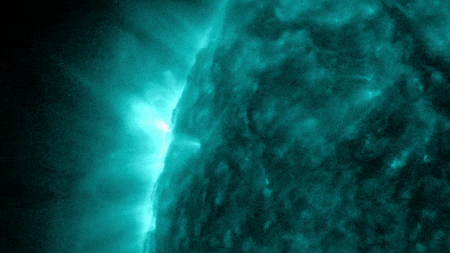
As we tune into this captivating solar show, we see AR3310 and AR3311 slowly rotating into view, as if taking their positions on the cosmic stage. And the performance is far from over.
The forecast predicts these two behemoth sunspots will be directly facing Earth by the weekend. We can only speculate about the cosmic spectacle that awaits as we wait for this celestial alignment.
The Unseen Impact: Radiation and Radio Blackouts
The radiation from solar flares, specifically the X-rays and extreme ultraviolet radiation, has a fascinating yet unseen impact on our planet. These high-energy particles make their way to Earth in just over eight minutes, moving at the speed of light.
Upon arrival, the radiation doesn't just stop at the surface. It goes on to ionize the upper layer of our atmosphere. This process of ionization involves electrically charging the atoms in the atmosphere, leading to a series of potential consequences.

One such consequence is the triggering of shortwave radio blackouts. The ionization caused by the solar flares interferes with radio signal transmission, particularly on the sunlit side of Earth. These blackouts can affect radio communication, navigation systems, and even power grids.
Staying Updated
Given the wide-reaching effects of solar activity and space weather, staying informed is not just an option, it's a necessity. From scientists to policy-makers, from amateur astronomers to the general public, awareness about solar events plays a critical role in our technologically driven world.
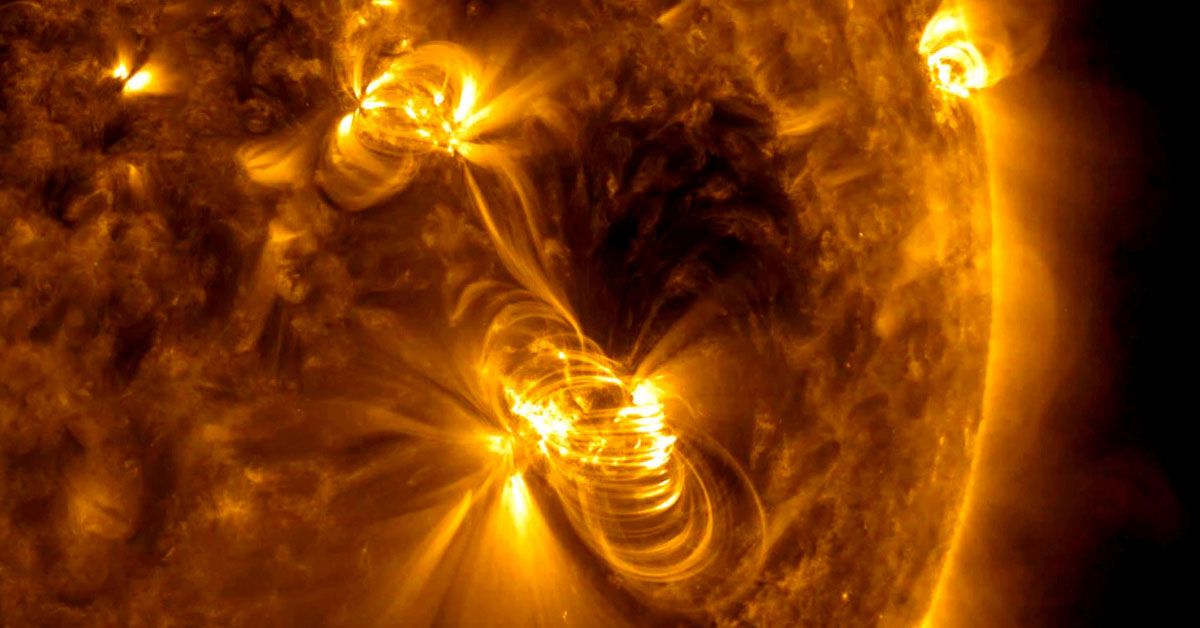
NOAA's Space Weather Prediction Center is an excellent resource in this regard, offering the latest solar X-ray data, updates about solar flares, and forecasts about space weather. By leveraging this information effectively, we can better anticipate the sun's moods and mitigate the potential effects of intense solar activity.
Sources: noaa.gov













